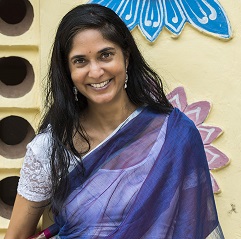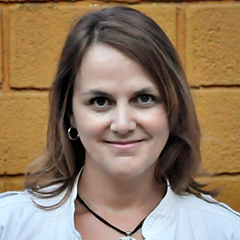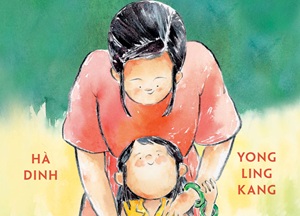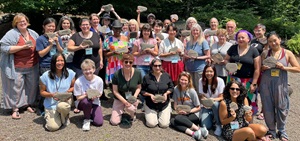There is magic in discovering a character’s journey – no matter the age, no matter the genre. We cast a spell on our readers with this journey by offering them someone (or something) to connect with and care about.
Secrets. Ambitions. Obsessions. Fears. The character’s believability must assert itself in the story to make this connection.
Authors employ many methods to bring this character to the page. We interview, sketch, meditate, and dream about our characters – their backstory, voice, emotions, and conflict. Here, authors Kristy Dempsey, Padma Venkatraman, and An Na discuss some of their favorite methods for uncovering character.
Alison: Hello, Padma! Welcome back to the blog. Can you tell our readers a bit about your techniques for uncovering character?

Padma Venkatraman
Padma: Hi, Alison! Yes. For me, uncovering character is a process. My process always begins with a sort of inspired burst of energy. I feel like I can hear a voice speaking in my head, and I want to listen and write down everything it says. As the novel develops, I begin to feel like I’m possessed by the ghost of my protagonist; I can hear my character’s thoughts and feel their emotions. Then I begin to dream scenes from my novel – and daydream scenes, too…
Alison: Yes! Dreaming of scenes and daydreaming scenes. Unexpected gifts. What about when the “gifts” wane? Anything a writer can do?
Padma: Of course, a novel is as much perspiration as it is inspiration, and these inspired days are offset by weeks, months, or years of hard work. I conduct interviews, glean knowledge from online databases, and, of course, pore over books. Research is an excuse to spend hours in the library, which is my favorite place after my home office – poring over books to get a better idea of the social milieu in my novel.
For Climbing the Stairs, I looked at photographs from family albums to get a better sense of the time (1940s), place (India), and people (my family members) on whom my characters are based. For A Time to Dance, I “went method” as an actor might and spent time on crutches to get a glimpse of what Veda would go through. For Island’s End, I revisited the journal I’d kept when I worked in the Andaman Islands, and looked at bird books, etc. to ensure my descriptions of flora and fauna were spot on.
Alison: Photographs are a lovely way to bring your characters into your writing space. Kristy Dempsey is here today, too! Hi, Kristy! Can you tell us a bit about your research?
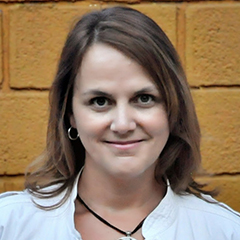
Kristy Dempsey
Kristy: Hi, Alison! Hi, Padma and Na!
In nonfiction (or in my case, historical fiction), I depend on researching historical details and context in order to fully realize my characters. I ask myself questions: What clothing would they have worn? What was the fabric? Was it itchy? Did my character go against the norms of the time period, and for what reason? What activities would they have participated in? What forms of transportation would they have used? What would they have eaten? What kind of home did they live in? And on and on and on. These details give me ideas for how my character might have responded in different situations. I can make choices about my character’s temperament based on these historical details.
When I was writing A Dance Like Starlight, editor Tamra Tuller asked me to revisit my story to add historical details that would provide context for the reader. As I began to research the details of the time period, it helped me to understand my main character – and her hopes and dreams – at a whole different level than before. And it was really fun to create this character, making her who I wanted her to be based upon my research. I know so much more about her than I was even able to fit into the book!
Alison: Many of your picture books are fiction. Is the process the same for uncovering character?
Kristy: I may begin writing with a wobbly idea for a character and his/her problem, but my process for fully developing that character doesn’t begin until the process of revision. In general, I think about what kind of growth my character needs to experience to solve his/her problem. Sometimes a character will need to experience internal growth (see themselves or their situation differently) in order to be able to take action to solve their problem. And conversely, sometimes a character will need to experience external growth (take action) in order to see themselves or their situation differently.
Alison: I know that your workshop will explore the concepts of internal growth and external growth for picture books through novels. I can’t wait to hear you speak further about both. Na, can you tell us a bit about how you find your characters?
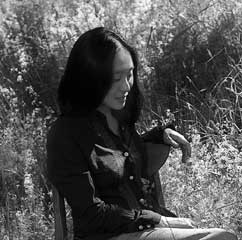
An Na
Na: In order to get to know a character better, I often do side writing in order to get to know them. I might put them in dialogue with another secondary character or the antagonist to see what the conversation might produce. Or sometimes I ask them a series of questions, like conducting an interview.
Alison: Great exercises, Na. Thinking about your characters in each of these situations must bring about new discoveries. Can you tell us about one such discovery?
Na: Discovering a character’s fears helps me answer the why questions about my character. Fears are also closely tied to what is at stake for the character, so I will look at the story and see what matters the most to the character, and that will lead to discovering what they fear the most.
Alison: Thank you, Na! Before we go, any last thoughts on character development?
Padma: Just one more thing. And it is important. Most important of all, maybe. I constantly ask myself how my characters would behave in different situations. For example, I just forgot an appointment with my optometrist. Ugh. Then again, if my character’s mom forgot an appointment, what would she say or do? How would my character react? I make up dialogue if I don’t have a pen handy – so I’m always thinking of them, even if I can’t be at my desk, writing. I don’t make lists of what my character has in his/her wallet, because my characters, until now, haven’t possessed wallets. Instead, I spend time with them, as much as I can, in my head, and I allow them to take over my heart.
Alison: Thank you all for your time today! See you in June at the Barn.
An Na was born in South Korea and grew up in San Diego, California. She is the author of three novels: A Step from Heaven, Wait for Me, and The Fold. A forthcoming young adult novel, The Place Between Breaths, will be published by Atheneum: Caitlyn Dlouhy Books. Her awards and honors include the Michael L. Printz Award, International Reading Association Award, National Book Award Finalist, ALA Best Books for Young Adults, New York Times Book Review Notable, and Junior Library Guild Selection.
Kristy Dempsey grew up in South Carolina and now works as a teacher-librarian in Belo Horizonte, Brazil, a bustling city of 5 million people. She is the author of Me with You (Philomel), Mini Racer (Bloomsbury), Surfer Chick (Abrams), Superhero Instruction Manual (Knopf), A Hop Is Up (Bloomsbury), Ten Little books (Little Bee Books) and A Dance Like Starlight (Philomel), a JLG selection, ALA Notable Book, Bank Street Best Book of 2015, CCBC 2015 Choice, and the winner of the 2015 Golden Kite Award for Picture Book Text.
Padma Venkatraman has lived in five countries, worked as chief scientist on oceanographic vessels, and even spent time scuba diving before becoming an author. A Time to Dance (Nancy Paulsen Books, Penguin) was released to five starred reviews and received numerous awards: ALA Notable, IRA Notable, Kirkus Best Book, NYPL Top 25, IBBY outstanding, etc. Her two earlier novels, Island’s End and Climbing the Stairs, were also released to multiple starred reviews, and were ALA/YALSA Best Books, Amelia Bloomer, CCBC, Booklist Editor’s Choices, and won several other honors.
— Interview by Alison Green Myers


